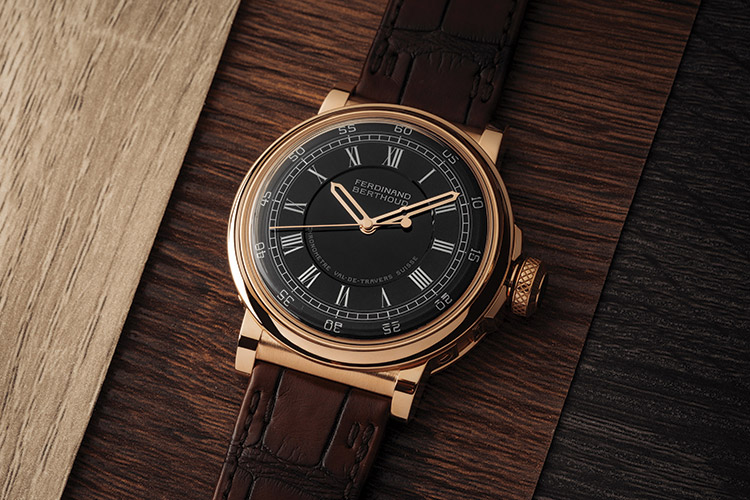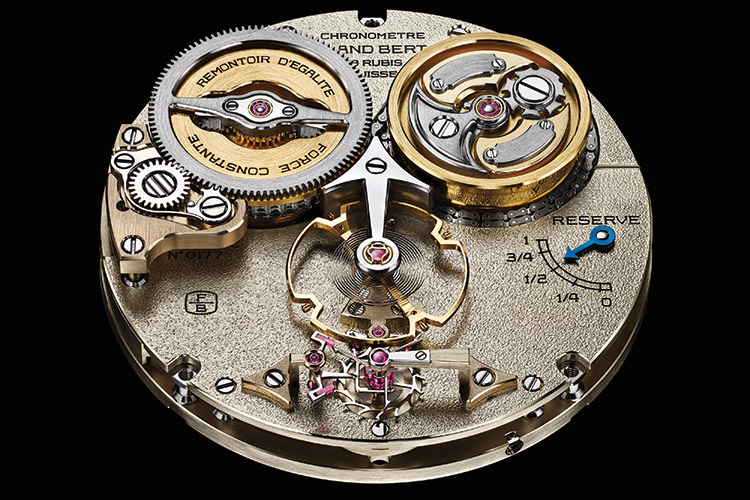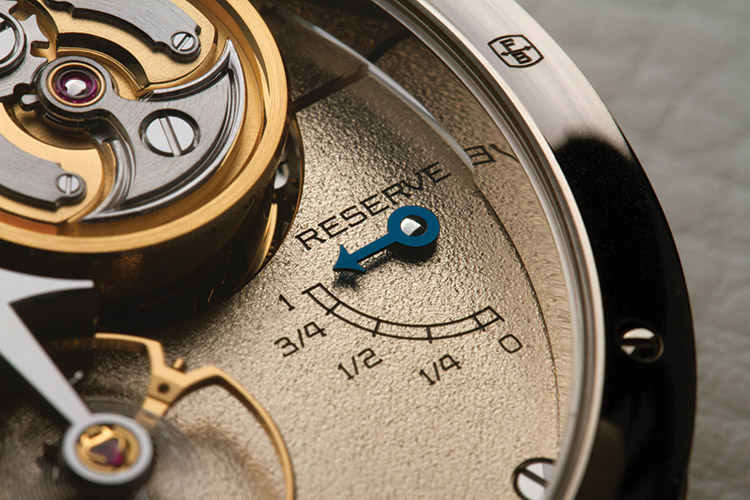Ferdinand Berthoud reveals secrets of FB 2RE.2

For the third time, a Ferdinand Berthoud chronometer has been shortlisted for the Grand Prix d’Horlogerie de Genève. Now, the manufacture is providing the intimate details of a unique movement – and publishing the figures for its chronometric performance, complete with supporting documentation
Most of the watches competing at the Grand Prix d’Horlogerie de Genève (GPHG) have a three-hand movement that relies on a traditional escapement, a choice that has proved itself in terms of reliability for over a century. However, in the Chronometry category in which Chronométrie Ferdinand Berthoud’s FB 2RE.2 model is positioned, over and above reliability, the crucial criterion is accuracy – a quality pursued with passion by master watchmaker Ferdinand Berthoud many years ago, and still the guiding principle in the work of the firm that bears his name.
The Chronomètre FB 2RE.2 is the result of a new combination of two regulation mechanisms, making it the only timepiece to benefit from a one-second remontoir d’égalité – and the constant force of a fusee-and-chain mechanism. The manufacture is now unveiling an exclusive presentation of its independent test results.

The fusee-and-chain system regulates the torque generated by the barrel, keeping it constant irrespective of whether the watch is fully wound or coming to the end of its power reserve. The remontoir d’égalité comes next: positioned at the end of the gear train, it regulates the torque delivered to the escapement. It does so by using a constant force spring, a component very similar to a hairspring – this coils and uncoils, always releasing the same quantity of energy, or torque, as it does so.
The remontoir d’égalité operates in conjunction with the escapement wheel. The latter’s rotation spans a 5-fold cycle, following the oscillations of the balance wheel. During the first 4 oscillations, the remontoire spring uncoils, releasing constant energy. On the 5th oscillation, the triple-shaft stop wheel, which previously prevented the mechanism from coiling back up, is released, allowing the movement to rewind the remontoire spring, which once again begins to release a constant amount of energy for the next 4 oscillations, and so on.
The entire cycle lasts one second. Additionally, to ensure optimum chronometric performance, the Calibre FB-RE.FC has been fitted with a new, aerodynamic, two-spoke variable-inertia balance wheel, fitted with four balance screws. Its large diameter ensures it maintains inertia and stability, while its low frequency of 18,000 VpH protects the power reserve.

Three successive systems devoted to chronometry
The Chronomètre FB 2RE thus comprises 3 segments. Step by step along the gear train, these gradually remove any torque variations liable to affect its accuracy. The first component is the barrel spring, the primary source of energy, technically capable of delivering an 80-hour power reserve. In the case of the Calibre FB-RE.FC, only 60% (50 hours’ worth) of this energy is used – the period during which the torque is the most linear.
This constant torque is selected by means of a Maltese Cross system; this can be seen on the top of the barrel drum. In principle, the barrel can rotate up to 8 times, but the Maltese Cross reduces the number of possible rotations to 6, mirrored by the 6 teeth on its profile. The two smaller indentations on the Maltese Cross prevent the power spring from supplying the gear with too much energy (at the beginning of the power reserve) and too little energy (at the end of the power reserve).
The fusee-and-chain system then provides a second level of constant power to the escapement during the 50-hour power reserve, acting rather like an automatic gearbox. The torque delivered by the barrel varies depending on how wound up it is – when the movement is fully wound, the chain is fully wound round the smaller-diameter end of a cone, with the barrel spring providing maximum power at this point. As time goes by, this force decreases, with the chain winding round the drum and moving from the smaller-diameter end of the cone to the larger-diameter end.

The variation in cone diameter compensates for the reduced torque in the barrel spring. By this stage of the process, the FB 2RE model already has a much higher degree of isochronism than prevailing standards, as can be seen from the results of the tests carried out on the FB 1.
This regulated energy then enters the third and final system: the remontoir d’égalité. This is designed to reduce the minute irregularities that occur when the teeth mesh, making the power supplied even more stable – so much so that the energy ultimately supplied to the escapement is almost perfectly constant.
The remontoir d’égalité with fusee-and-chain movement was tested by two independent laboratories; firstly, at the COSC for 15 days, and then, once housed in its case, for a further two days (50-hour power reserve) using the Fleuritest.
The results are beyond dispute: over the entire duration of the power reserve, the readings taken show discrepancies of less than 0.5 seconds on average from the benchmark GPS clock optical measurement. For the FB 2RE model, there is thus very little difference in running time between the first and the last minute.





